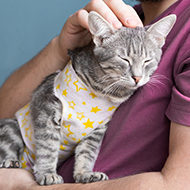Scientists identify pheromone which relaxes rats
Pheromones play an important role in how rats communicate with each other.
A new study has identified a pheromone which allows relaxed brown rats to reduce the fear felt by other brown rats nearby. The findings could pave the way for more humane traps to be produced.
Brown rats, like many other animals, use a range of pheromones to communicate information to each other.
Previous research has observed that the presence of calm rats can reduce fear responses in other rats. Led by scientists from the University of Tokyo, this new study set out to identify the pheromone responsible.
The research team collected the bioactive odour from anesthetised laboratory rats and compared it with non-bioactive odours.
Collecting the bioactive odour had to be done carefully, as if the rats were stressed by the procedure, it would have affected the pheromones which they released.
The subsequent analysis revealed that the pheromone released by calm rats is 2-methylbutyric acid (2-MB). Incidentally, it is a chemical which is also found in cheese.
The scientists tested the effect that a minute amount of the isolated pheromone had on both laboratory rats and wild rats. In both cases, 2-MB alleviated fear responses.
As well as revealing more about how rats communicate and interact socially, the reserachers have suggested that the pheromone could be used to develop more humane traps when rats need to be removed from a location. The chemical could be used to entice rats into non-lethal traps and keep them calm while they are being transported.
Associate professor Yasushi Kiyokawa said: “We tested at two different locations to see if wild rats would respond to 2-MB. They responded similarly to our lab rats. Synthetic 2-MB reduced their fear of novel things, or neophobia. This is important because it’s neophobia in urban rats that makes producing effective traps so difficult.”
The study, ‘An appeasing pheromone ameliorates fear responses in the brown rat (Rattus norvegicus)’, has been published by the journal iScience.



 RCVS Knowledge has called on vet practices to audit their post-operative neutering outcomes.
RCVS Knowledge has called on vet practices to audit their post-operative neutering outcomes.